Rare! Original 1967 Apollo Program "Earth Landing System Parachutes & Forward Heat Shield Attachment and Thruster Assembly" 1st Edition NASA Astronaut Training Document*
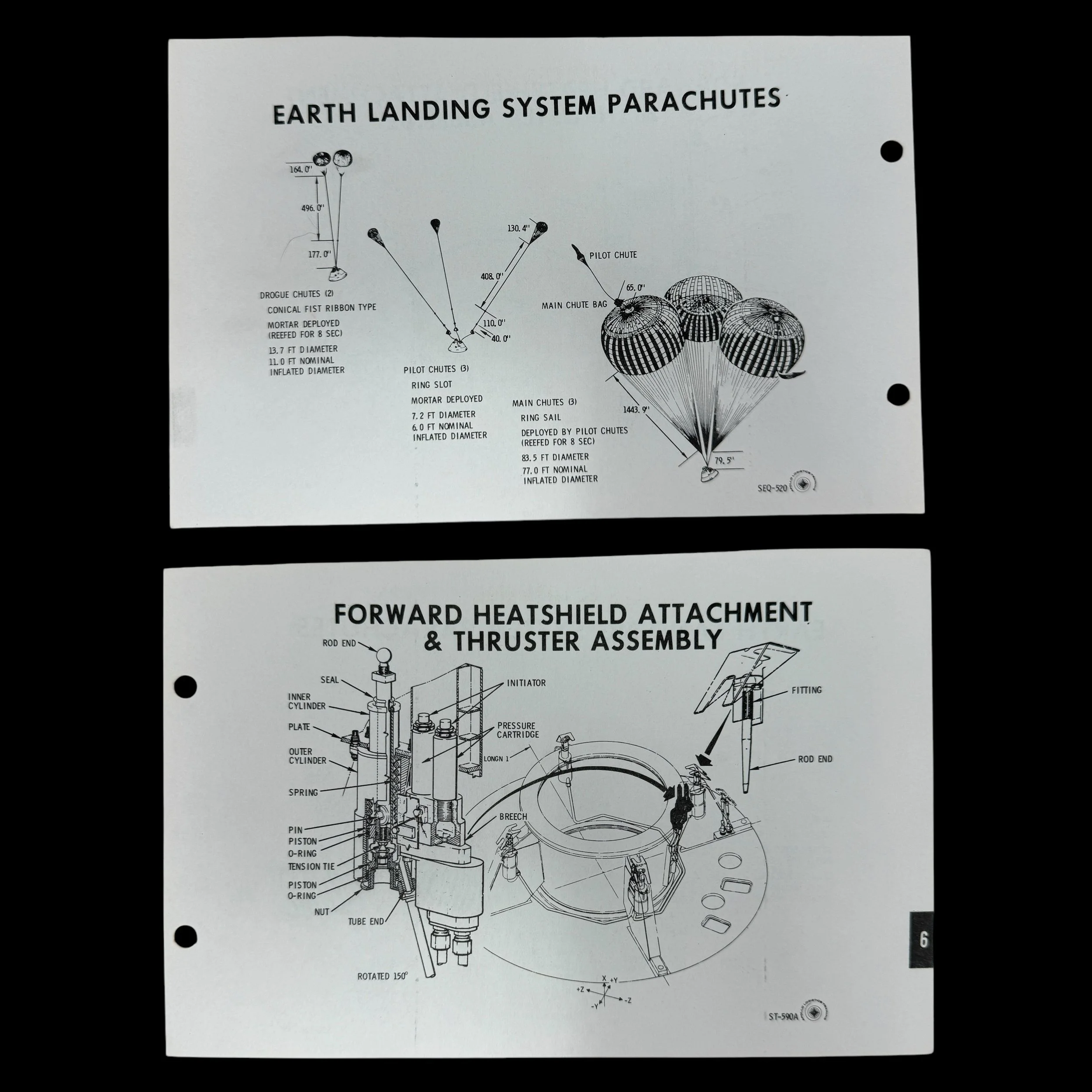
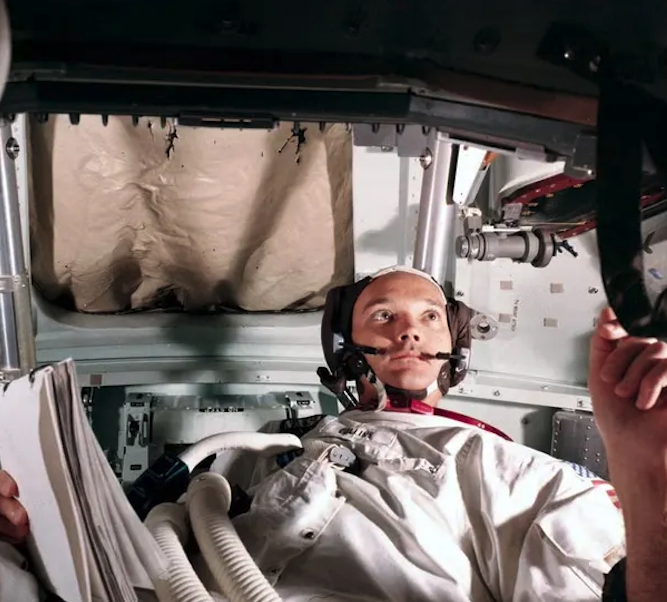
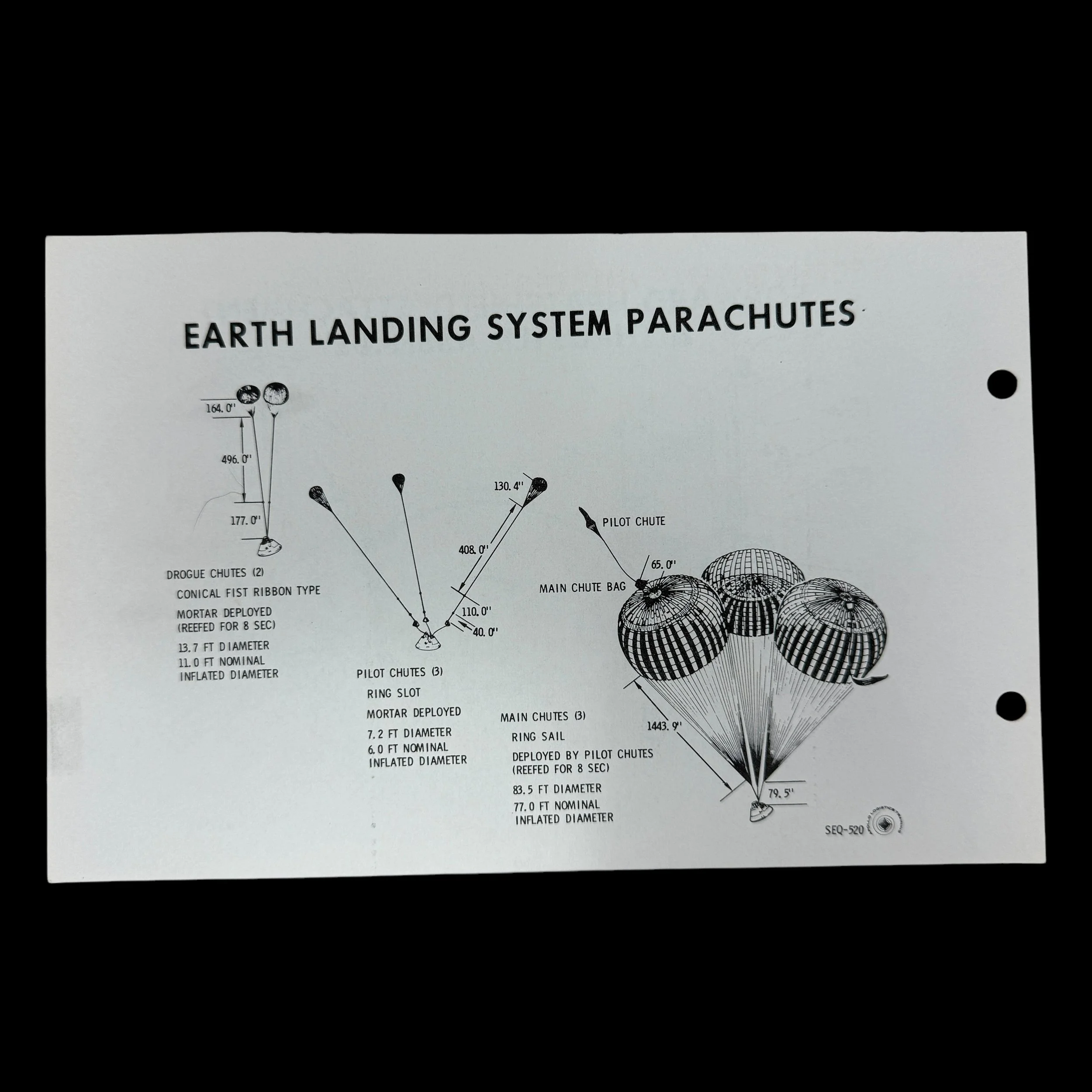
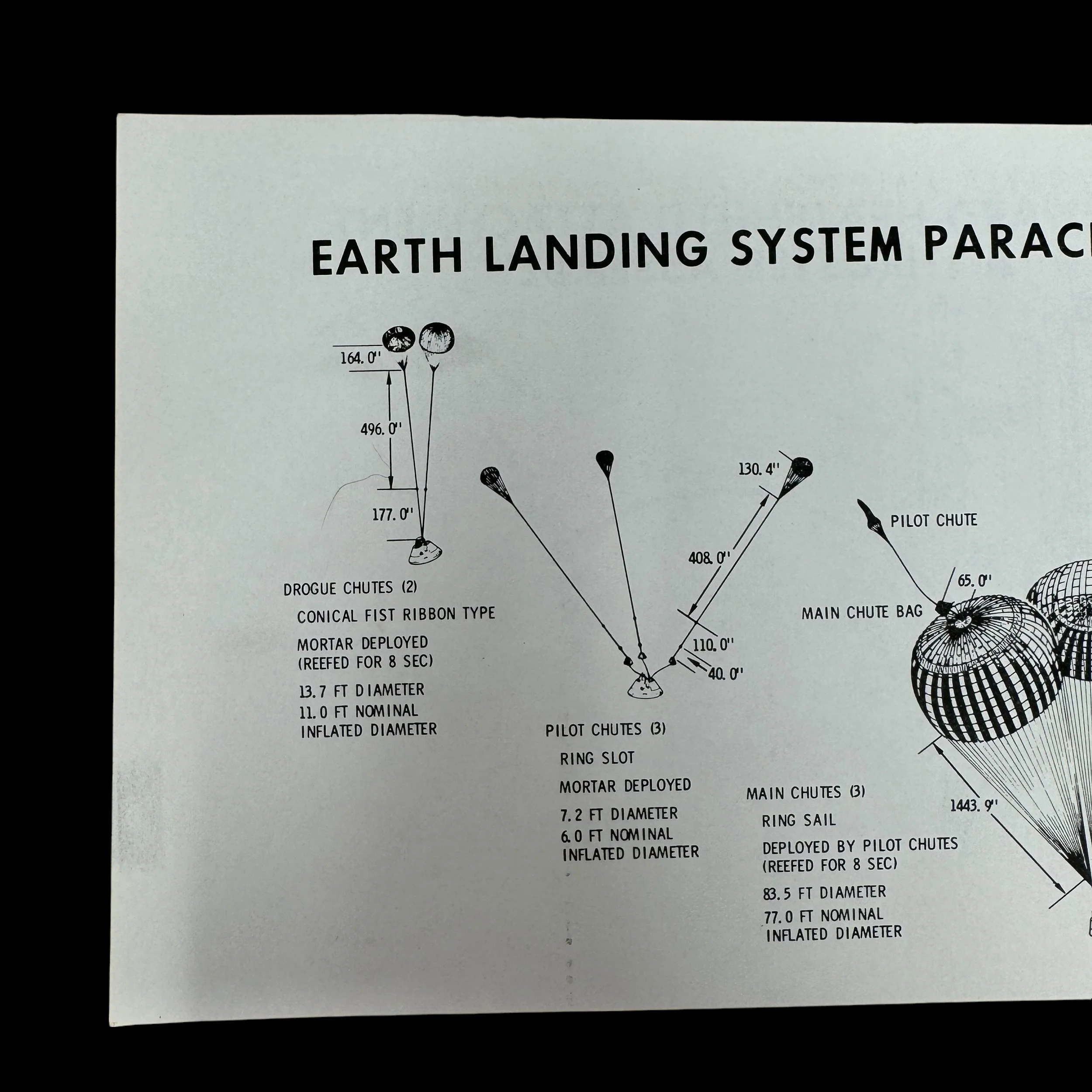
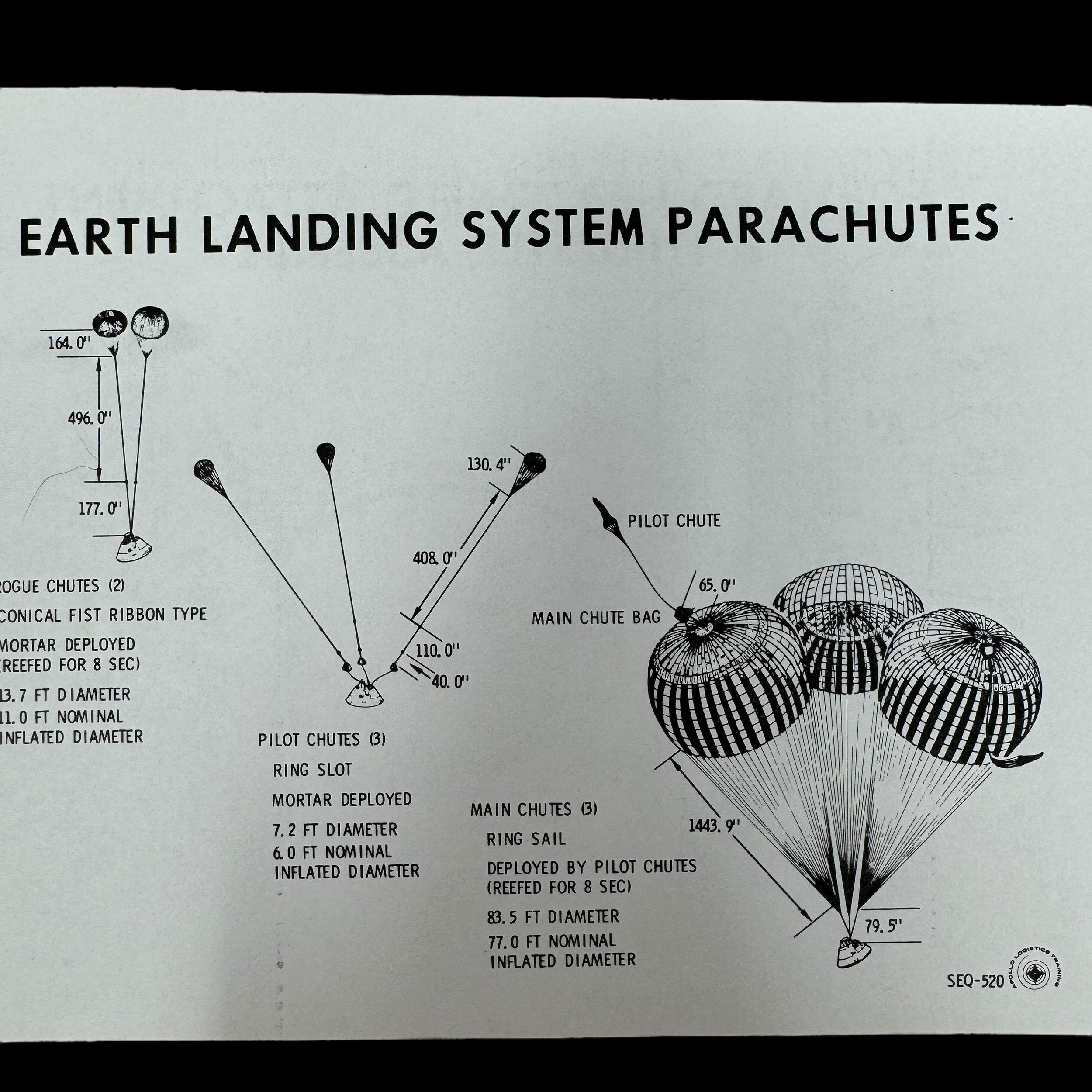
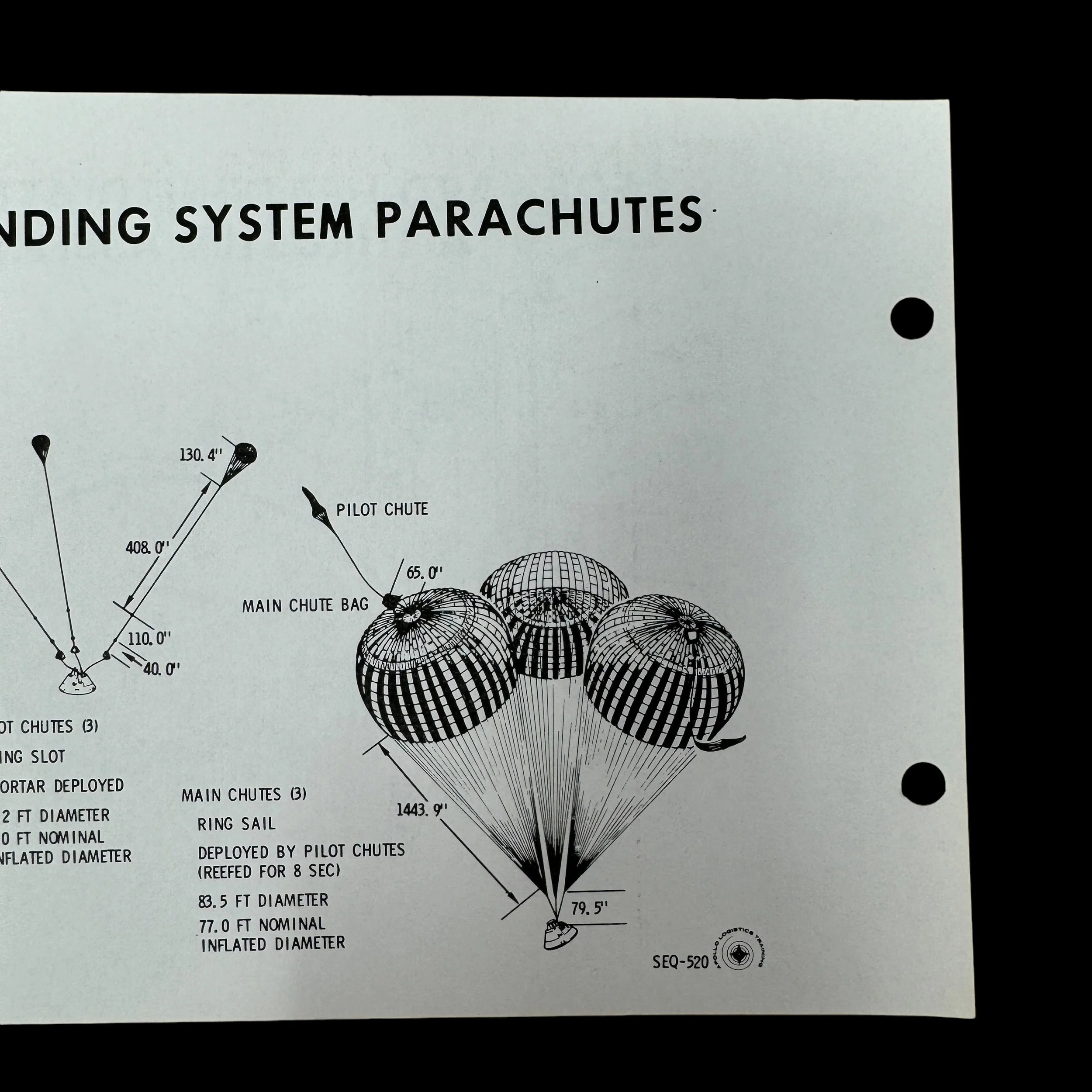
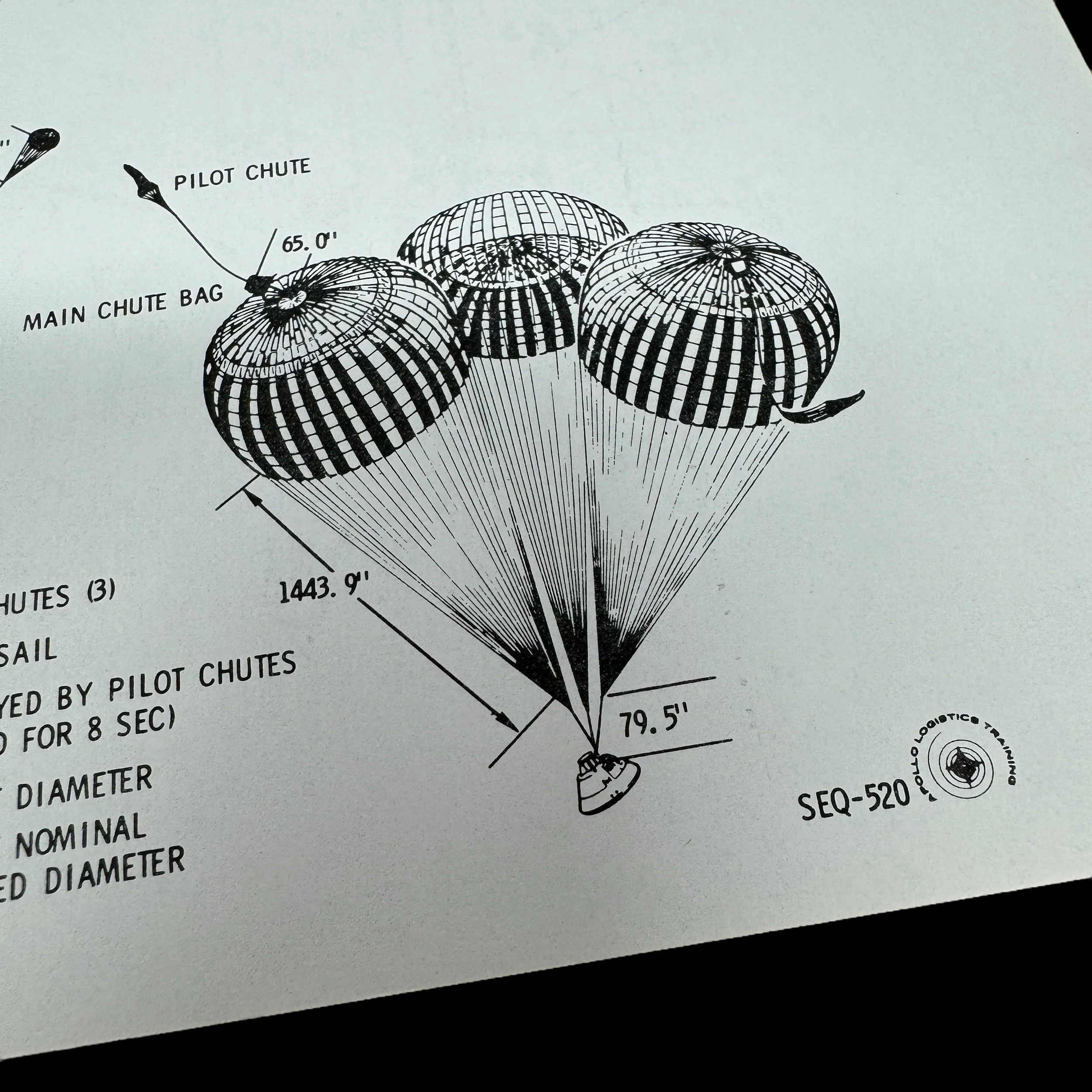

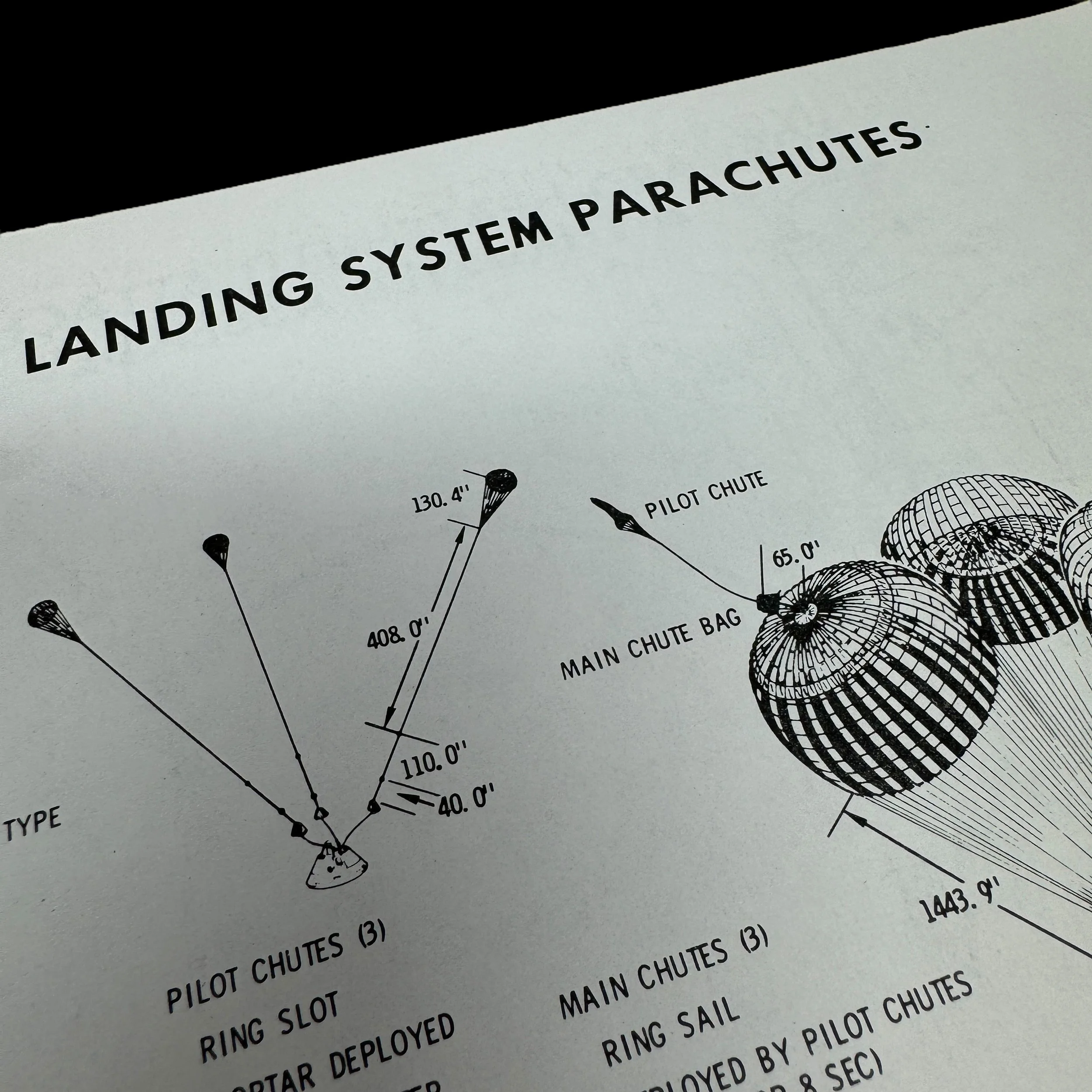
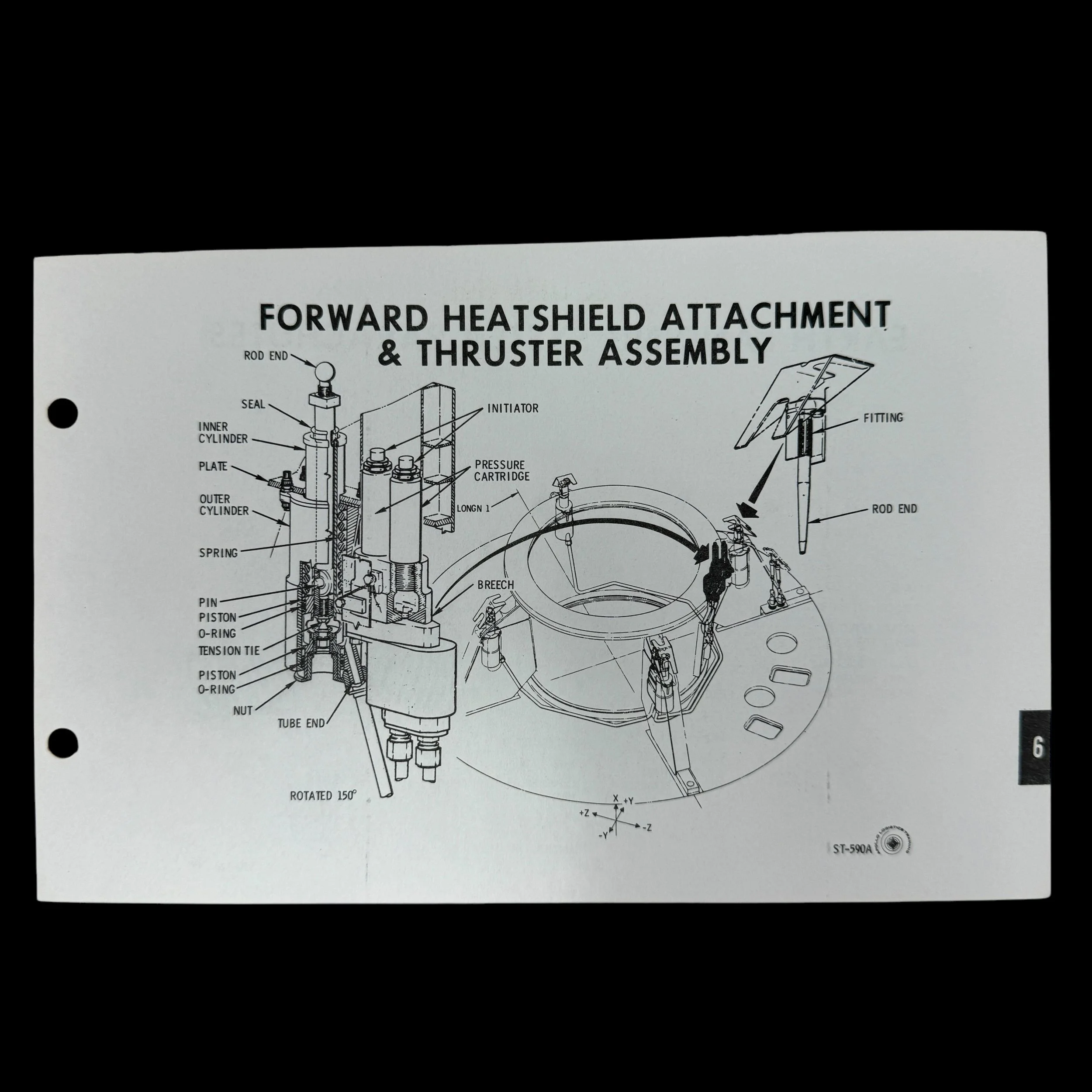
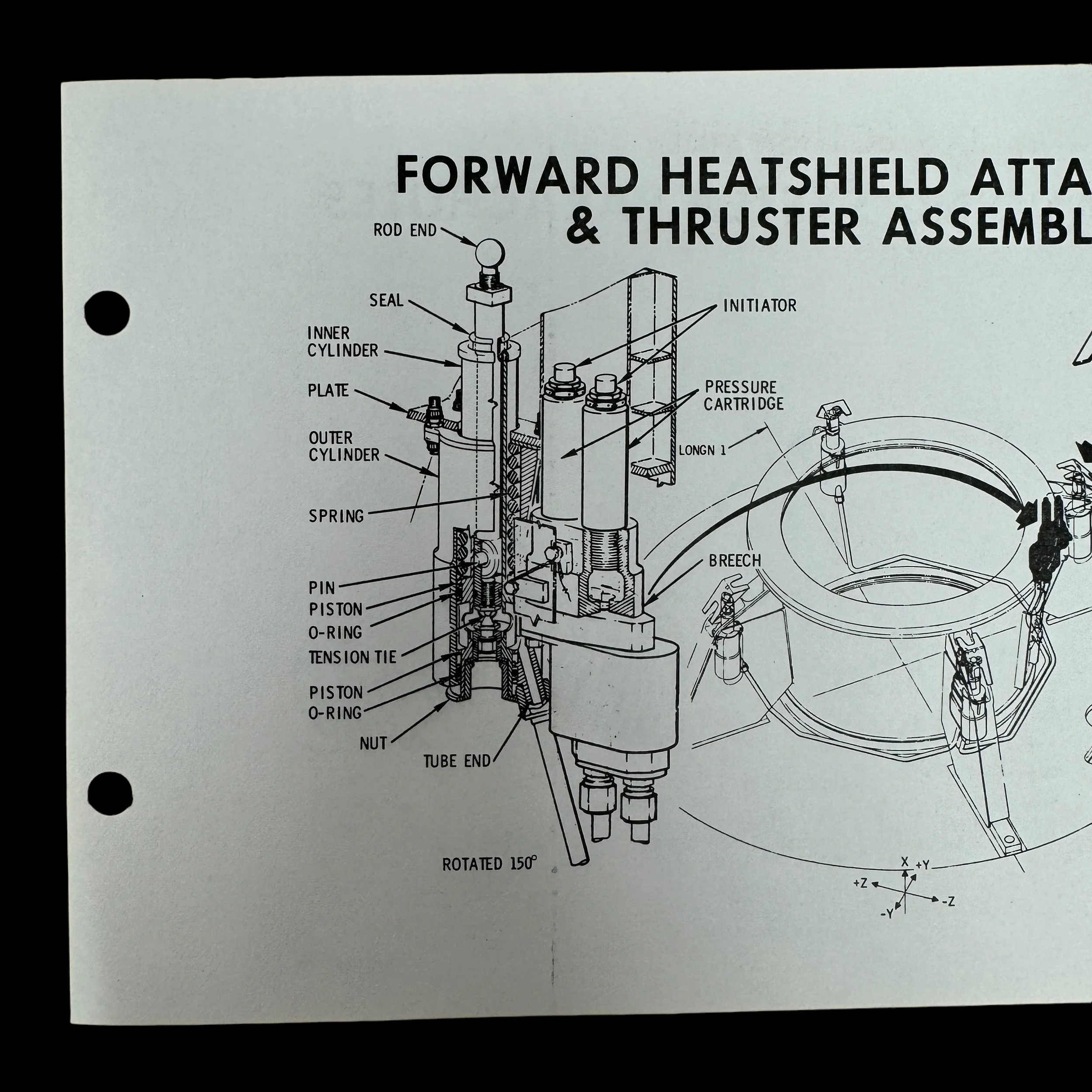
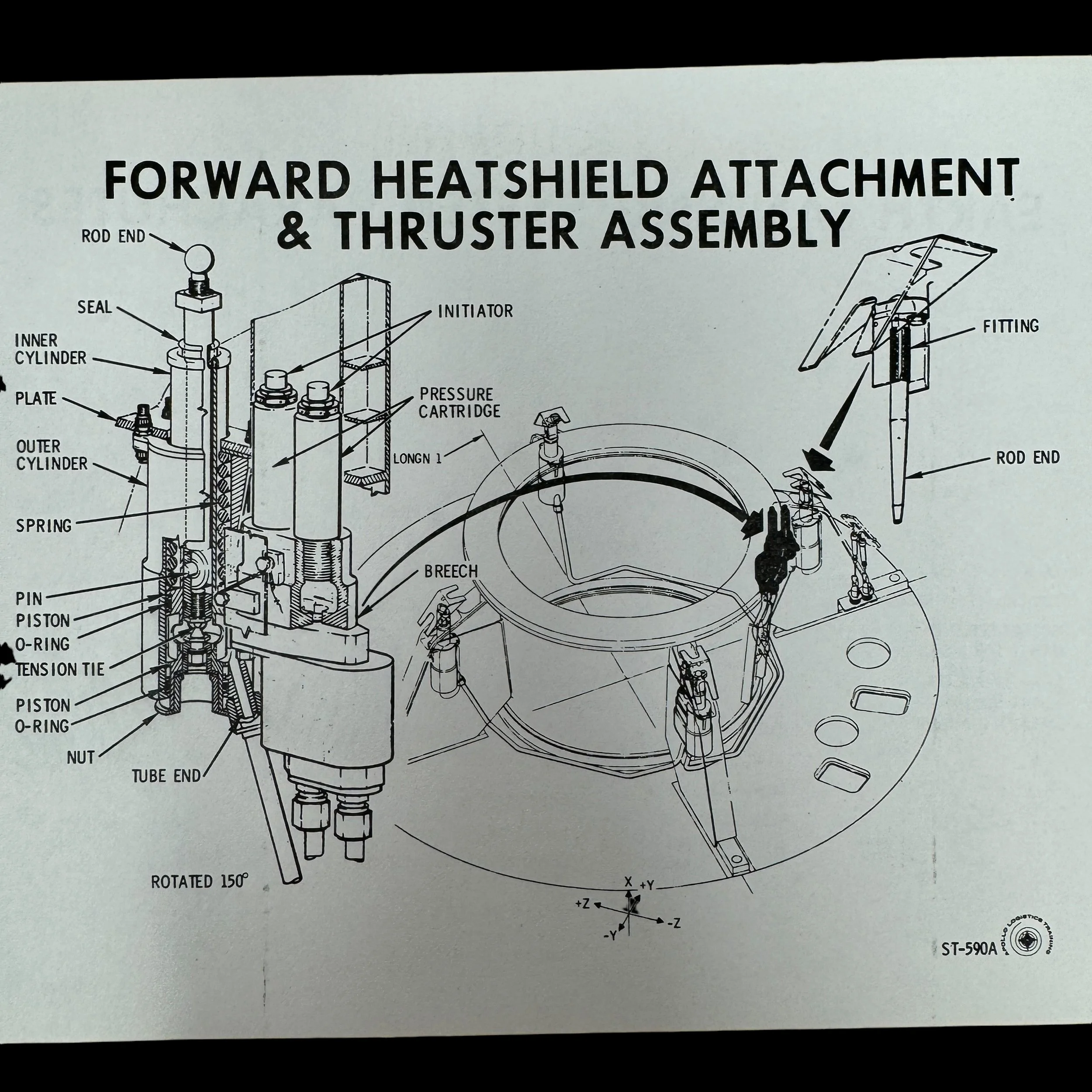
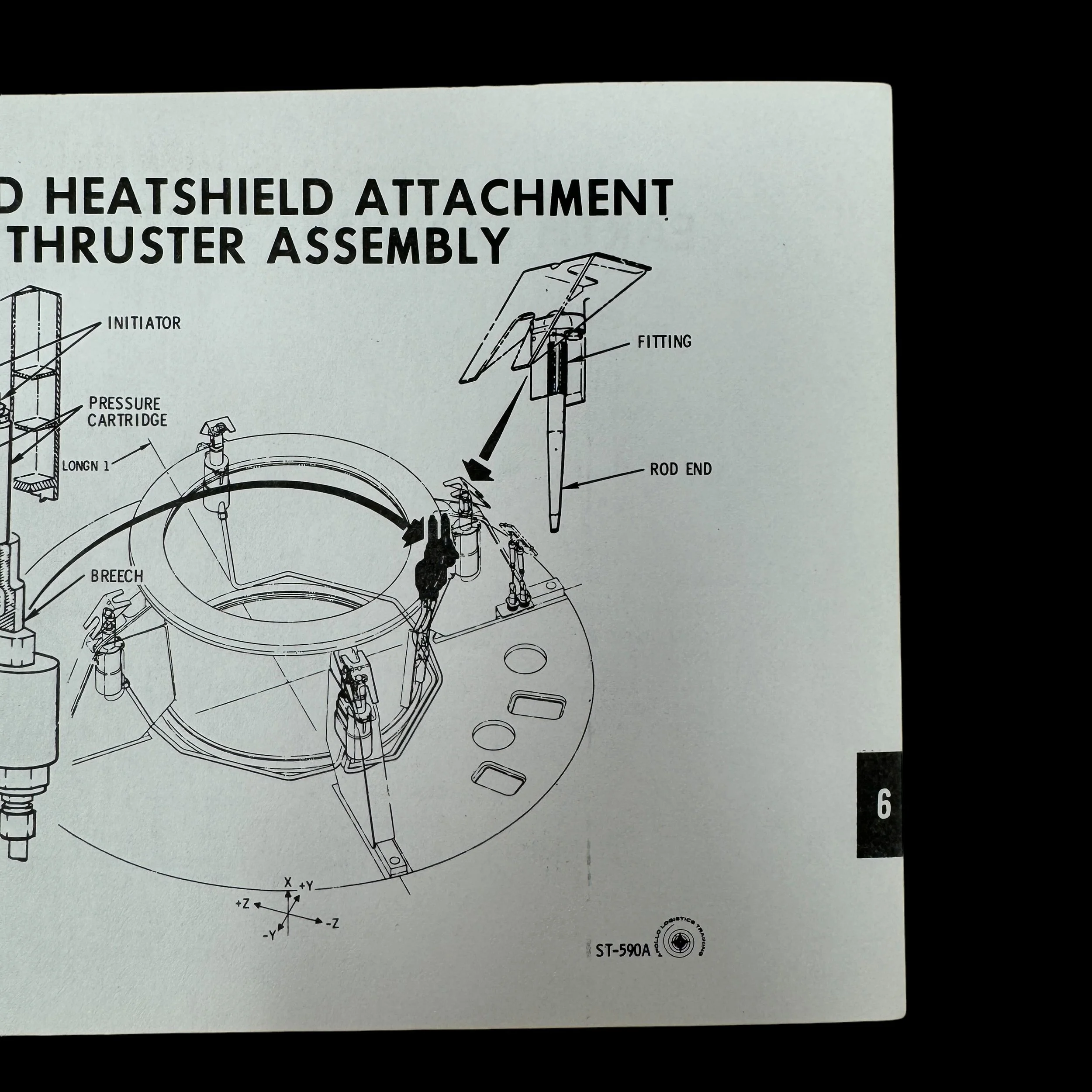
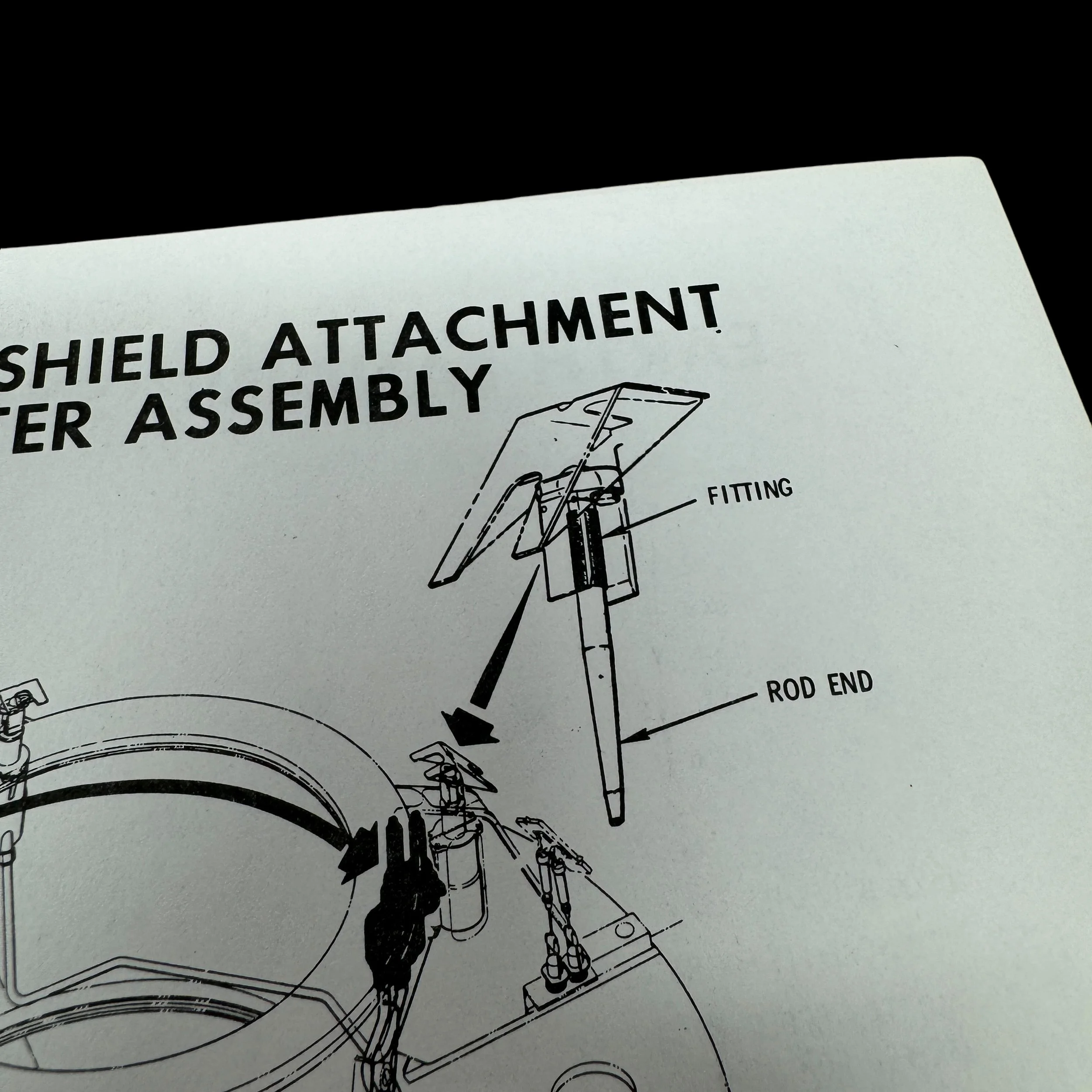
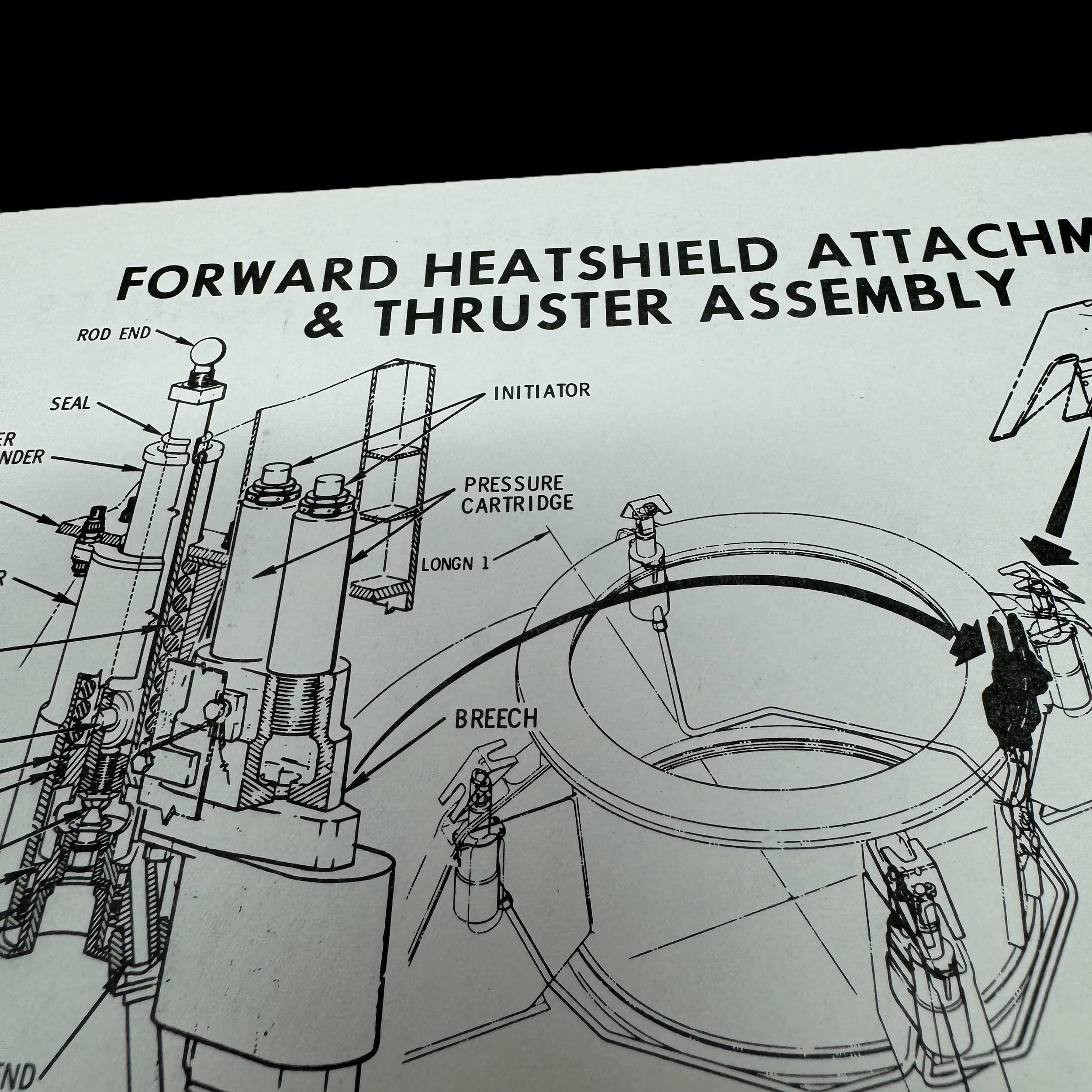
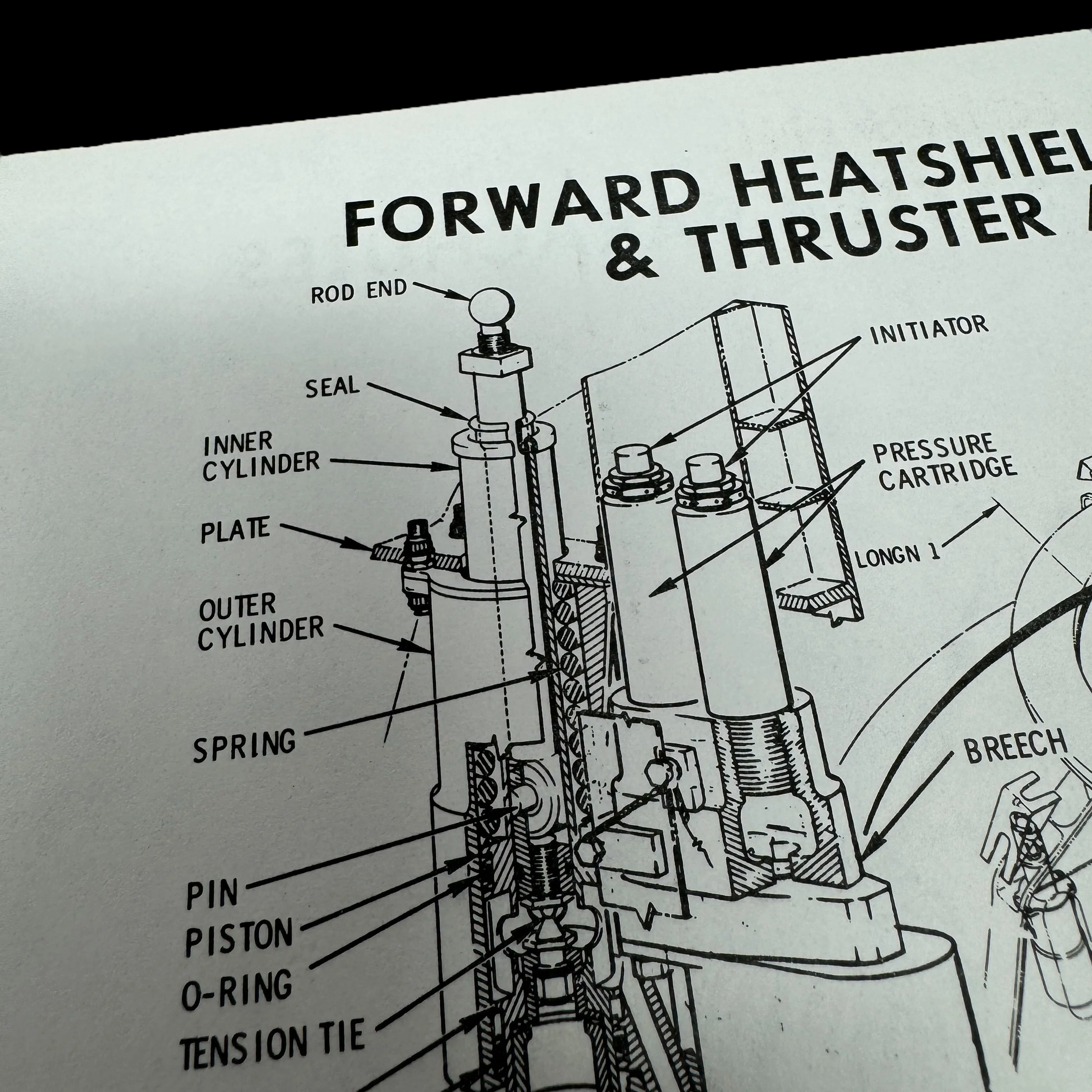
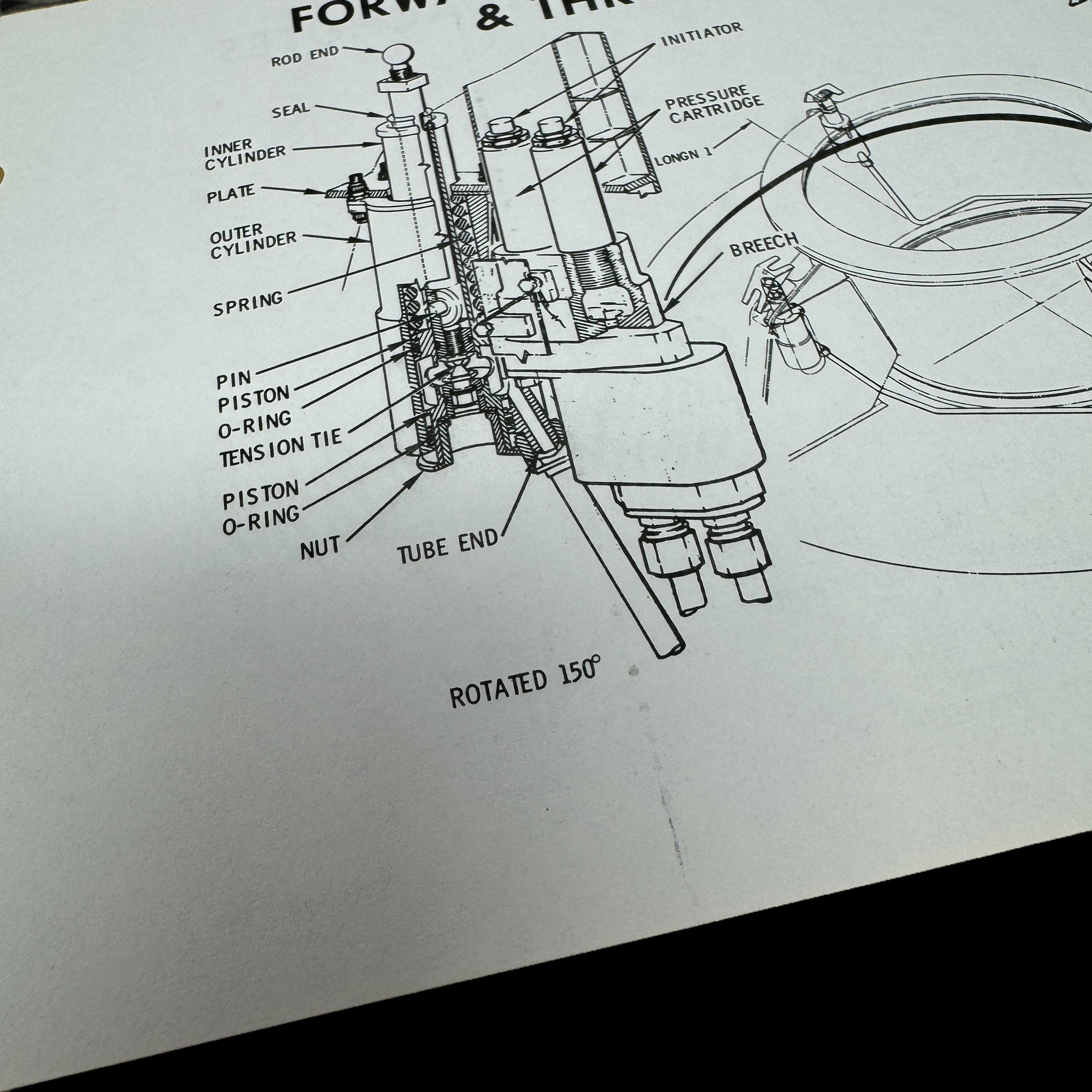
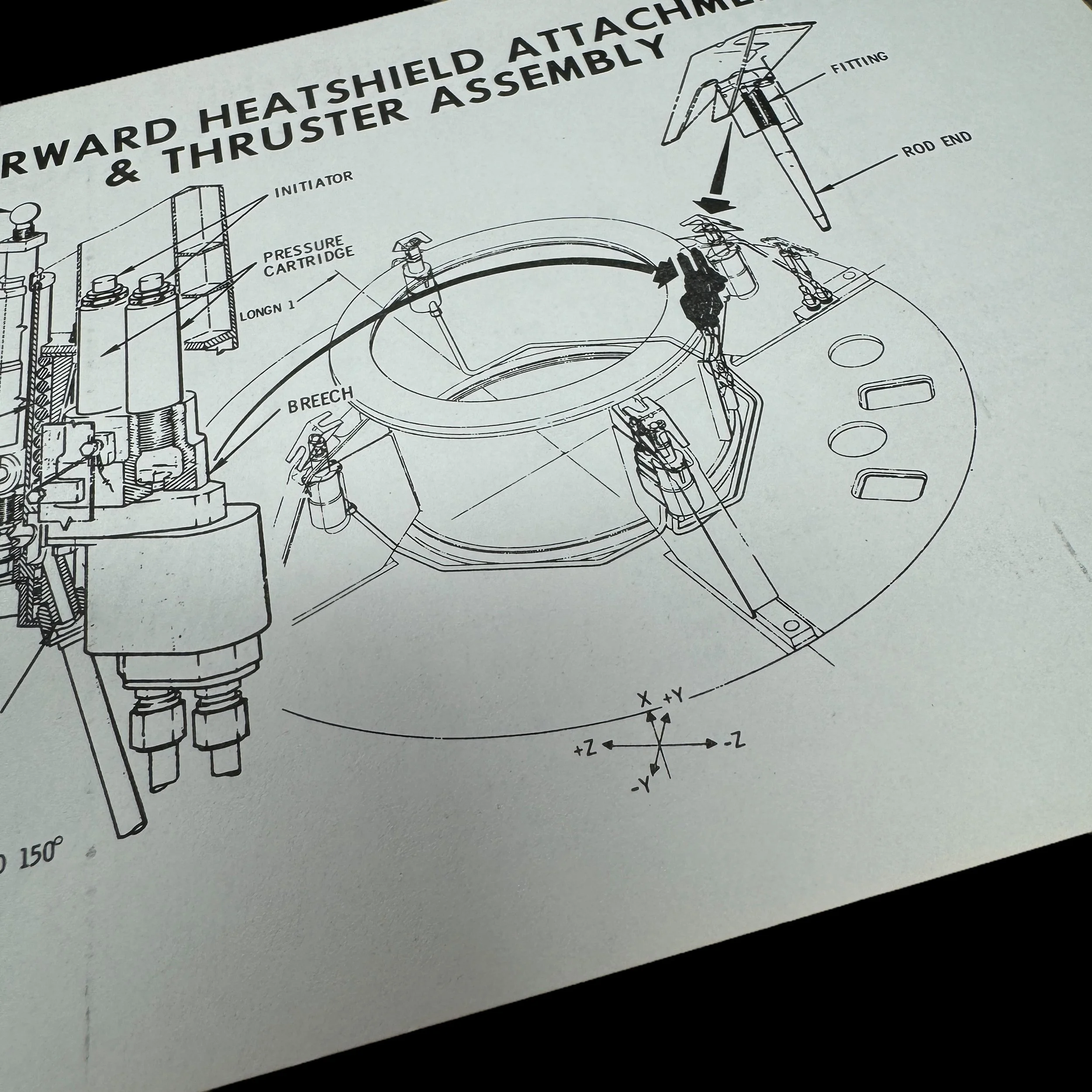

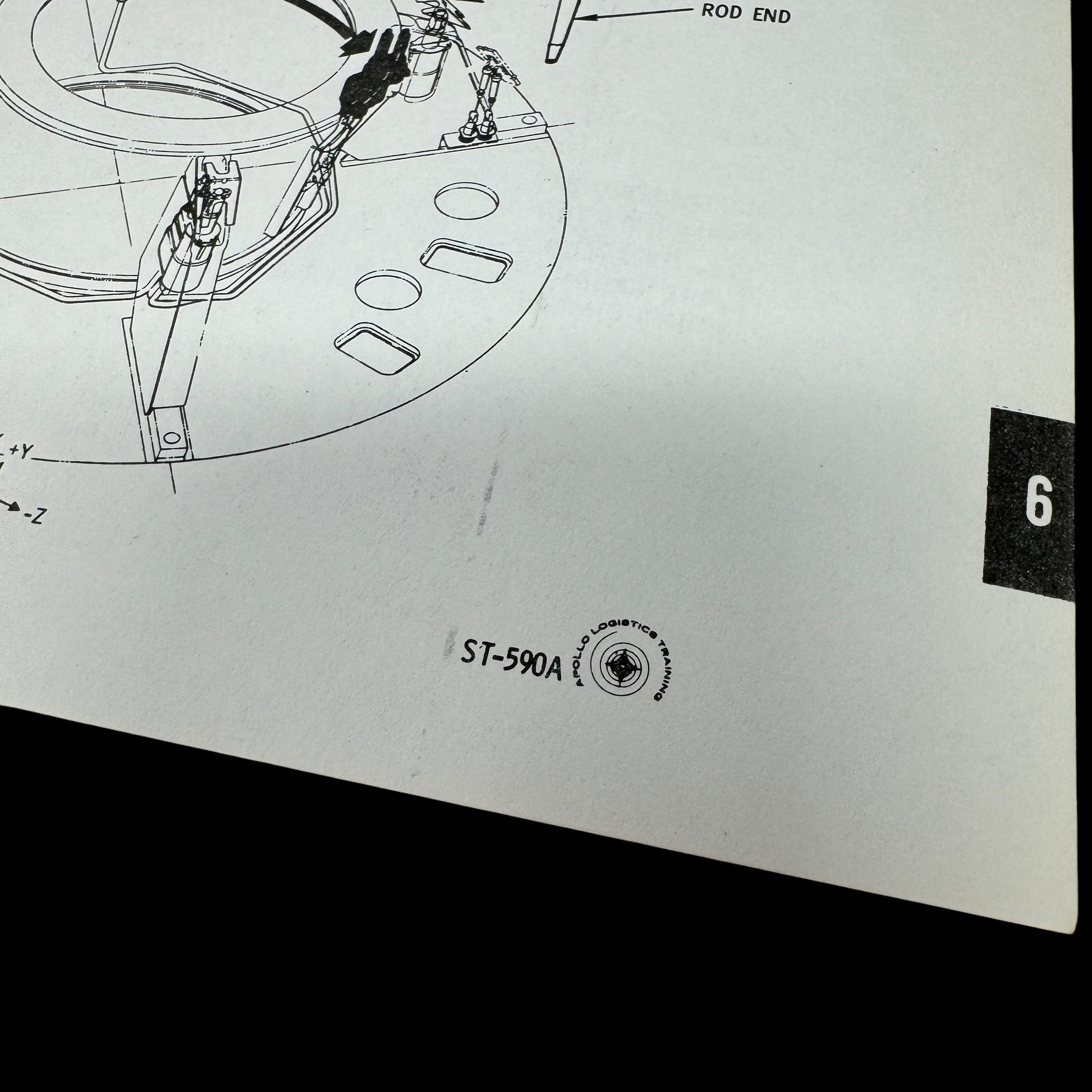
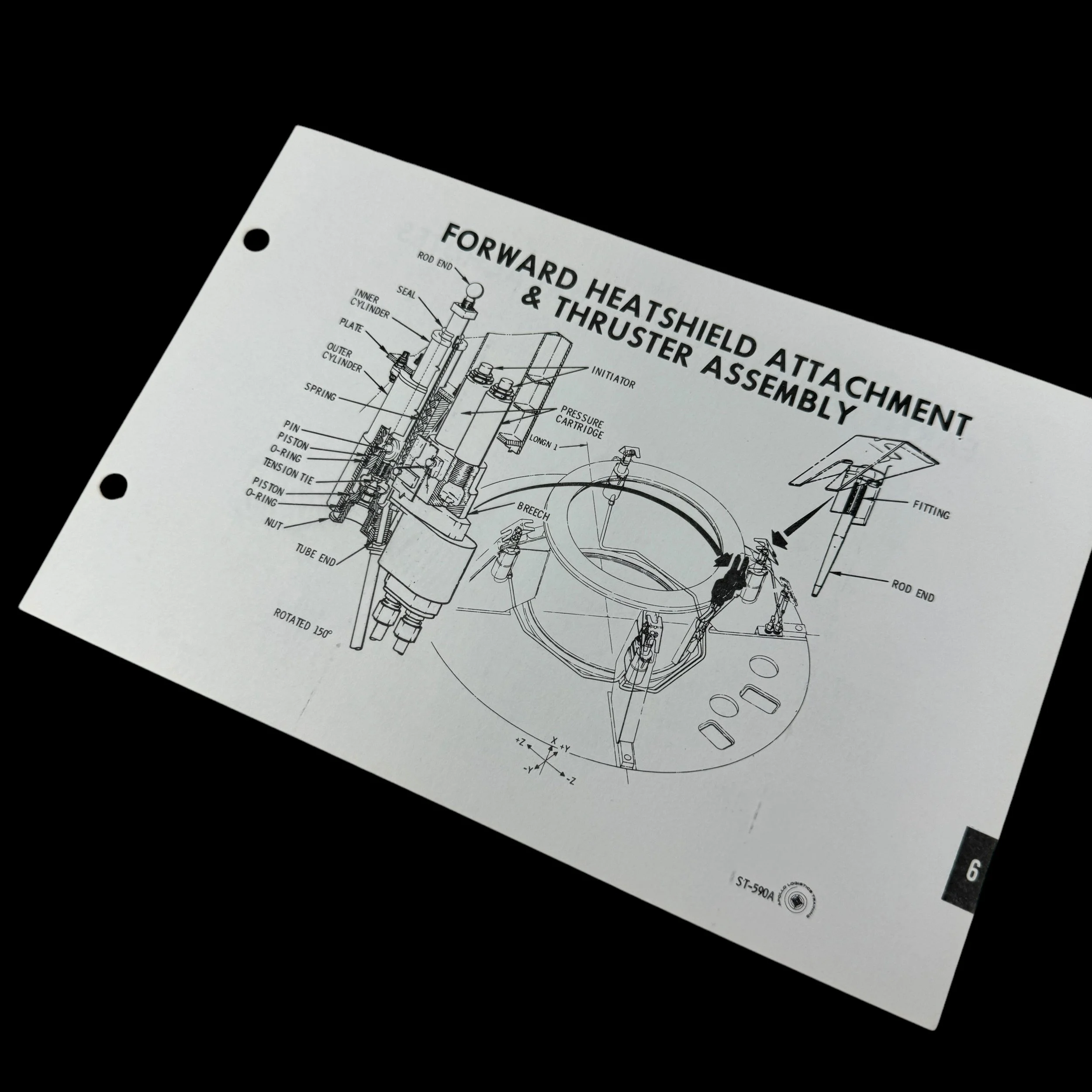
Rare! Original 1967 Apollo Program "Earth Landing System Parachutes & Forward Heat Shield Attachment and Thruster Assembly" 1st Edition NASA Astronaut Training Document*
Comes with a hand-signed C.O.A. and a full historical research write-up
Size: 5.5 x 8.5 inches
From: Apollo Program (NASA) - Earth Landing System Parachutes & Forward Heat Shield Attachment and Thruster Assembly
Dated: 1967
This extraordinary and highly sought-after piece of space history is an original, double-sided Apollo Program astronaut training document produced by NASA in 1967. Used by legendary U.S. Apollo astronauts, this document was a crucial tool for studying and mastering the operations and equipment the Apollo astronauts would rely on during their historic Apollo missions.
As a 1st edition Apollo astronaut training resource, this document played a pivotal role in preparing some of the most iconic figures in space exploration, including Neil Armstrong, Buzz Aldrin, Michael Collins, Frank Borman, and James Lovell, among others. It marks a key moment in NASA's journey, as the Apollo program was at the heart of humanity's mission to land on the Moon.
This document was made by NASA just prior to the landmark mission of Apollo 7, the first crewed test flight of the Command and Service Module in Earth orbit, which set the stage for the incredible achievements that followed. Apollo 8 soon made history by orbiting the Moon, with astronauts Frank Borman, James Lovell, and William Anders aboard, paving the way for the ultimate success of the Apollo program.
In 1969, the Apollo program reached its zenith with Apollo 11, when Neil Armstrong and Buzz Aldrin made their historic lunar landing, while Michael Collins commanded the orbiting spacecraft above. This success was followed by additional lunar explorations with Apollo 12, 14, and later missions, featuring astronauts like Charles Conrad, Alan Bean, Alan Shepard, and Edgar Mitchell—heroes who further cemented NASA's legacy in space exploration.
This is a once-in-a-lifetime opportunity to own a genuine artifact from NASA's Apollo Program, directly connected to the training of astronauts who participated in missions from Apollo 7 through Apollo 14. A rare and invaluable piece of space history, it represents the dedication, courage, and groundbreaking achievements of the Apollo astronauts as they ventured beyond our world and into the unknown.
The Apollo Program stands as one of the most significant achievements in human history, marking mankind's first steps onto another celestial body. The technological challenges faced by NASA were immense, particularly in designing systems to safely return astronauts to Earth after their lunar voyages. Two crucial components of this re-entry system were the Earth landing system parachutes and the forward heat shield attachment thruster assembly. These systems ensured that the Command Module (CM) carrying astronauts could decelerate safely upon re-entry into Earth's atmosphere and make a controlled landing in the ocean.
Earth Landing System Parachutes
The Earth landing system parachutes were critical in slowing down the Apollo Command Module during its final descent to Earth after re-entry into the atmosphere. At this point, the CM would be traveling at speeds of over 24,000 mph as it entered the upper layers of the atmosphere. Without a reliable parachute system, the module would have crashed into the ocean at deadly speeds. The design and engineering of the Apollo parachute system was a marvel of precision, ensuring the astronauts' safety after their historic missions.
The parachute system consisted of three main stages: the drogue parachutes, the pilot parachutes, and the main parachutes. Each stage was responsible for reducing the velocity of the Command Module in a controlled, stepwise manner.
Drogue Parachutes
After the Apollo CM had re-entered the atmosphere and slowed down to about 500 mph due to atmospheric drag and the forward heat shield’s initial protective measures, the drogue parachutes were deployed at an altitude of around 23,000 feet. The purpose of the drogue chutes was to stabilize the Command Module and slow its descent further to about 175 mph. These parachutes, each 16.5 feet in diameter, were deployed by a small mortar attached to the CM’s aft bulkhead. The drogues were attached to the CM by bridle lines that helped to maintain the module's proper orientation.
The drogue parachutes played a crucial role in stabilizing the module as it hurtled toward Earth. Without them, the module would have been at risk of tumbling uncontrollably, making the deployment of the larger main parachutes ineffective or even dangerous. Drogues deployed around 4 minutes before splashdown and remained attached until the final landing phase.
Pilot Parachutes
Once the Command Module descended to around 10,000 feet, the drogue parachutes were jettisoned, and the pilot chutes were deployed. These small parachutes, only 7 feet in diameter, were responsible for pulling out the larger main parachutes from their storage compartments. The transition from drogue to main parachutes was one of the most critical moments in the landing sequence.
Main Parachutes
The main parachutes were responsible for the final deceleration of the Command Module. Measuring 83.5 feet in diameter each, the three main parachutes deployed to slow the CM from around 175 mph to just 22 mph. The descent velocity was carefully calculated to ensure that the astronauts would not experience dangerous g-forces during the final splashdown.
Each of the three parachutes was independently packed, and the system was designed to allow for redundancy. Even if one parachute failed, the remaining two could still slow the module enough to ensure a safe landing. The main parachutes were designed to open in stages to reduce the shock load on the system: first they deployed in reefed form (partially opened), and after a few seconds, they fully deployed.
The parachute system had to account for a variety of variables, including different atmospheric conditions, the possibility of asymmetric loads, and potential damage to the parachutes themselves. NASA conducted extensive tests, dropping CM-shaped test modules from aircraft to simulate re-entry conditions. The performance of the parachutes was tested under different conditions to ensure their reliability. In total, the Apollo parachutes were deployed successfully in all crewed Apollo missions, with only one incident during Apollo 15, where a parachute failed but the remaining two ensured a safe landing.
Forward Heat Shield Attachment and Thruster Assembly
The forward heat shield attachment and thruster assembly was another essential element of the Apollo re-entry system. The forward heat shield, located at the bottom of the Command Module, was designed to protect the spacecraft from the intense heat generated during atmospheric re-entry. As the module traveled through the atmosphere, the friction generated temperatures as high as 5,000°F (2,760°C). The heat shield, made from ablative material, slowly burned away, carrying the heat away from the CM and protecting the astronauts inside.
The forward heat shield attachment thruster assembly was responsible for controlling the CM's orientation during re-entry. This assembly included the Reaction Control System (RCS) thrusters, which were small rocket engines placed around the base of the Command Module. These thrusters provided precise control over the spacecraft's attitude, ensuring that the forward heat shield remained properly aligned to bear the brunt of the re-entry heat.
The RCS thrusters, powered by hypergolic fuel (which ignites on contact), were used to make small adjustments to the module’s orientation. Even small deviations in the module's angle during re-entry could result in a dangerous situation. If the heat shield did not face the correct direction, parts of the CM could be exposed to temperatures it was not designed to withstand, leading to the failure of the thermal protection system.
In addition to controlling the orientation during re-entry, the forward heat shield thrusters also played a role in the safe jettisoning of the heat shield once it had served its purpose. After the heat shield had ablated and the Command Module had slowed down sufficiently, the shield was detached, allowing the parachute system to be deployed. The thrusters ensured that the heat shield separated cleanly from the CM, without damaging the parachute assembly or causing instability in the descent.
Integration and Testing
The Earth landing system parachutes and the forward heat shield attachment thruster assembly had to work together seamlessly to ensure the safe return of the Apollo astronauts. The parachutes could only function if the module was correctly oriented and stabilized by the heat shield and thrusters during re-entry. Similarly, the thrusters and heat shield would not be sufficient to slow the module for a safe landing without the parachutes.
NASA conducted extensive tests to ensure that these systems would function correctly. The parachutes were tested in numerous high-altitude drops, while the heat shield and thruster assembly were tested both in space and in simulations of re-entry conditions. The Apollo Command Module was tested in extreme environments to account for every possible scenario.
The success of these systems was demonstrated in all of the Apollo missions, culminating in the safe return of the astronauts from the moon. The Earth landing system parachutes and the forward heat shield attachment thruster assembly worked together to provide a reliable, redundant system for the most dangerous phase of the mission: returning home.
The Apollo Program's Earth landing system parachutes and the forward heat shield attachment thruster assembly represent engineering at its finest. These systems were designed to ensure the safety of the astronauts in the most challenging environments imaginable. Their success was not only a triumph of human ingenuity but also a testament to the painstaking attention to detail that defined the Apollo missions. Without these components, the successful landing of astronauts after their historic moonwalks would have been impossible, and the legacy of the Apollo Program as one of the greatest achievements in human history would have been incomplete.